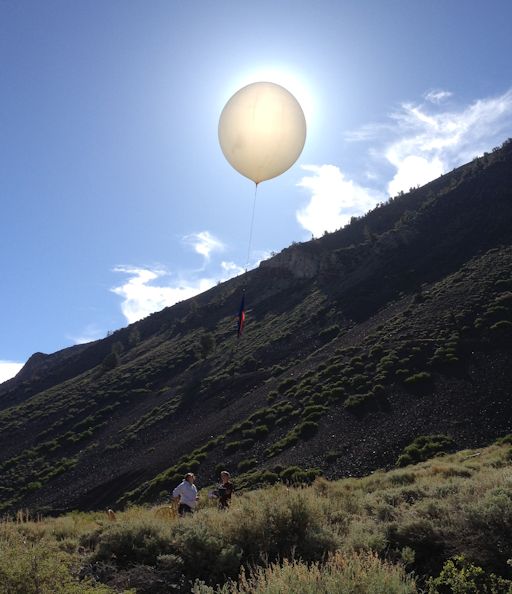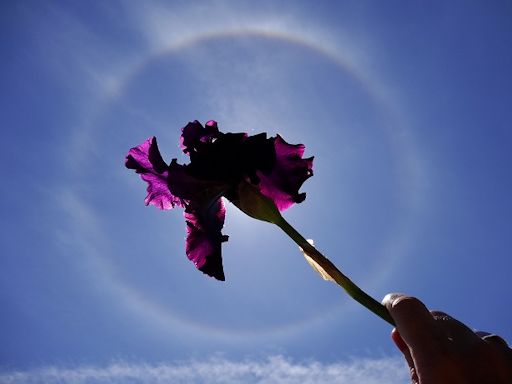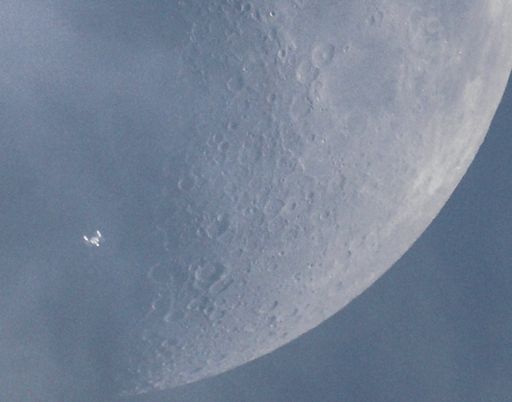They came from outer space--and you can have one! Genuine meteorites are now on sale in the Space Weather Store. | | |
QUIET, FOR NOW: Solar activity remains low. However, a raft of sunspots emerging over the sun's eastern limb is boosting the sunspot number and the chance of flares. Solar flare alerts: text, voice.
SPACE WEATHER BALLOON LAUNCH: Yesterday, high school students in Bishop, California, launched another "space weather balloon." Its mission: To investigate the effect of solar flares and radiation storms on Earth's ozone layer. The group's mentor, Dr. Tony Phillips, photographed the balloon moments before launch from their "Edge of Space Port" in the Sierra Nevada mountains:

The balloon's payload carried two cameras, an ozone sensor, a cryogenic thermometer, and a GPS altimeter to an altitude of 110,000 feet above Earth's surface. All of the payload's core space weather instrumentation was built by the students themselves. After the balloon popped, as planned, the payload parachuted back to Earth, landing near the ancient Bristlecone Pine Forest in California's White Mountains. A recovery team has already recovered the payload, and students are inspecting the data now.
The students launched on June 14th, a period of low solar activity, because they wanted to compare quiet sun data with a data set they collected on May 22nd during a strong solar radiation storm. Stay tuned for their results!
Sponsor a space weather balloon: Would you like to sponsor a flight? The students, who call themselves Earth to Sky Calculus, offer a service for sponsors called "Edge of Space Advertising." Just yesterday they flew an ad for Interpret America (flight photo), which paid for the helium in the balloon. The students have also flown banners, cards, cows, running shoes, presidents and other items. If there's something you'd like to fly, please contact Dr. Tony Phillips for rates and details.
Realtime Space Weather Photo Gallery
SUN HALO: Sky watchers, the next time you are outside on a bright sunny day and cirrus clouds drift across the sun, find a flower and hold it up. You might see something like this:

"Yesterday, my wife and I were at an Iris flower farm in traverse city, Michigan, with 6 acres of awsome colored flowers in prime bloom," says photographer Jim Fantozzi. "I noticed the ring around the sun, so I had my wife block the sun with an iris flower and--wow--it came out pretty cool."
The ring of light is a 22-degree sun halo caused by ice crystals in the clouds. Up where cirrus clouds form, 5 to 10 km high, the air temperature is always cold enough for ice crystals, which means sun halos may be seen at any time of year. Irises, however, prefer spring. In other seasons, you might have to cover the sun with something else such as a finger or a five-year old. Browse the sun halo gallery for more ideas:
Realtime Sun Halo Photo Gallery
ISS MOON TRANSIT: The Moon is waxing full this week, which means there's more bright territory for spaceships to cross. Yesterday, astrophotographer Maximilian Teodorescu of Dumitrana, Romania, caught the International Space Station passing in front of the Moon in broad daylight:

"In the past I have captured the silhouette of the ISS in front of the Sun or Moon," says Teodorescu. But this time the ISS was not silhouetted. It was even more brightly lit than the Moon behind it. "I photographed them both in plain daylight, with the Sun still hanging at 26 degrees above the horizon."
Travelling at 17,000 mph, the ISS flits across the face of the Moon in only a fraction of a second. Teodorescu knew when to activate his Canon 550D digital camera using precise transit predictions from CalSky.
Realtime Noctilucent Cloud Photo Gallery
[previous years: 2003, 2004, 2005, 2006, 2007, 2008, 2009, 2011]
Realtime Aurora Photo Gallery
Realtime Comet Photo Gallery

